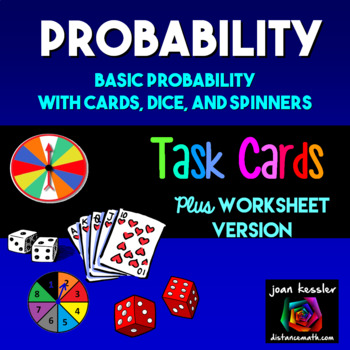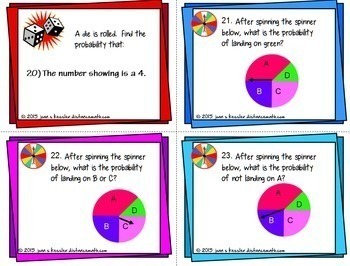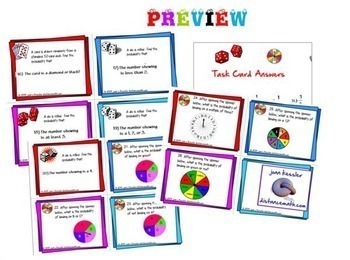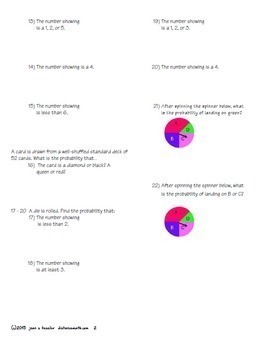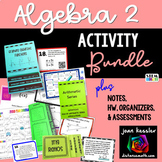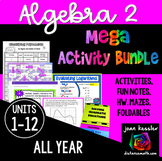Algebra Statistics Probability Task Cards
- PDF
What educators are saying
Also included in
- I have bundled together 35 of my most popular activities for Algebra 2 for you to implement into your Algebra 2 curriculum. This highly discounted bundle is a sampler of the many activities for your curriculum that are available to engage your students, help you teach, and reinforce your lessons inPrice $75.00Original Price $124.75Save $49.75
- This Probability and Statistics Algebra 2 Unit 11 Activities Bundle includes a large variety of engaging quality activities designed to reinforce your students' skills and also help you to easily differentiate your curriculum to meet the needs of all your students. Included are scores of pages of FPrice $36.50Original Price $57.50Save $21.00
- This Algebra 2 Mega Bundle of Activities for Second semester, Units 7 - 12 will keep your students engaged and learning, no matter which Algebra 2 curriculum, text, or notes package you use The large variety of quality activities are designed to reinforce your students' skills and also help you toPrice $175.00Original Price $325.65Save $150.65
- This Algebra 2 Mega Bundle of Activities for Second Semester, Units 1 - 12, will keep your students engaged and learning, no matter which curriculum, text, or notes package you use. The large variety of quality activities are designed to reinforce your students' skills and also help you to easily dPrice $299.00Original Price $594.49Save $295.49
Description
This set of 26 Probability Task Cards cards reviews basic probability concepts of independent and dependent events using dice, spinners, and a standard deck of playing cards. These are appropriate for grades 6 - 9.
By using a familiar and limited sample space, students will less likely get confused by the rules and be able to grasp the concepts fulfilling the CCS for Probability. They will be learning based on familiar topics, but expand their cognitive thinking skills with the questions asked. The questions include independent and dependent events, addition, subtraction rules and using the counting principle. The Task Cards can be used many ways, including small groups.
Included in this lesson:
- 26 Task Cards. Students should not need a calculator.
- Worksheet version of the Questions
- Student recording sheet
- Answer keys
____________________________________________________________________
You may also like:
★ Permutations and Combinations Fun Maze with Google Slides
★ Permutations and Combinations Flip Book
★ Permutations and Combinations Task Cards plus QR
★ Permutations and Combinations Fun Maze
★ Permutations and Combinations on the TI 83 - 84
★ Odds and Probability Task Cards and Notes
Save with Bundles
★ Algebra: Huge Bundle of Foldables
★ Algebra: Huge Bundle of Great Activities and Resources #1
★ Algebra 1 Digital Bundle of Interactive Activities
______________________________________________________________________
⇒ Click here to follow my TpT store to hear about my freebies, sales, and new products. Did you know that you can earn 5% back towards future purchases by leaving feedback? Your feedback is greatly appreciated.
If you have any questions or comments please contact me by email me at: joankessler@distancemath.com.
Connect with me:
✓ Join Joan's World of Math to access my Free Resource Library, and get news and updates
✓ Visit my Facebook Page
✓ Follow me on Instagram
LICENSING TERMS: The purchase of a license for this resource is for use by one teacher only for his or her students only. No part of this resource is to be shared with colleagues or used by an entire department, school, or district without purchasing the proper number of licenses. Please respect my hard work and do not share.
COPYRIGHT TERMS: ©2019 Joan Kessler (joansworldofmath™). This resource may not be uploaded to the internet in any form, including classroom/personal websites or network drives, unless the site is password protected and can only be accessed by students.

